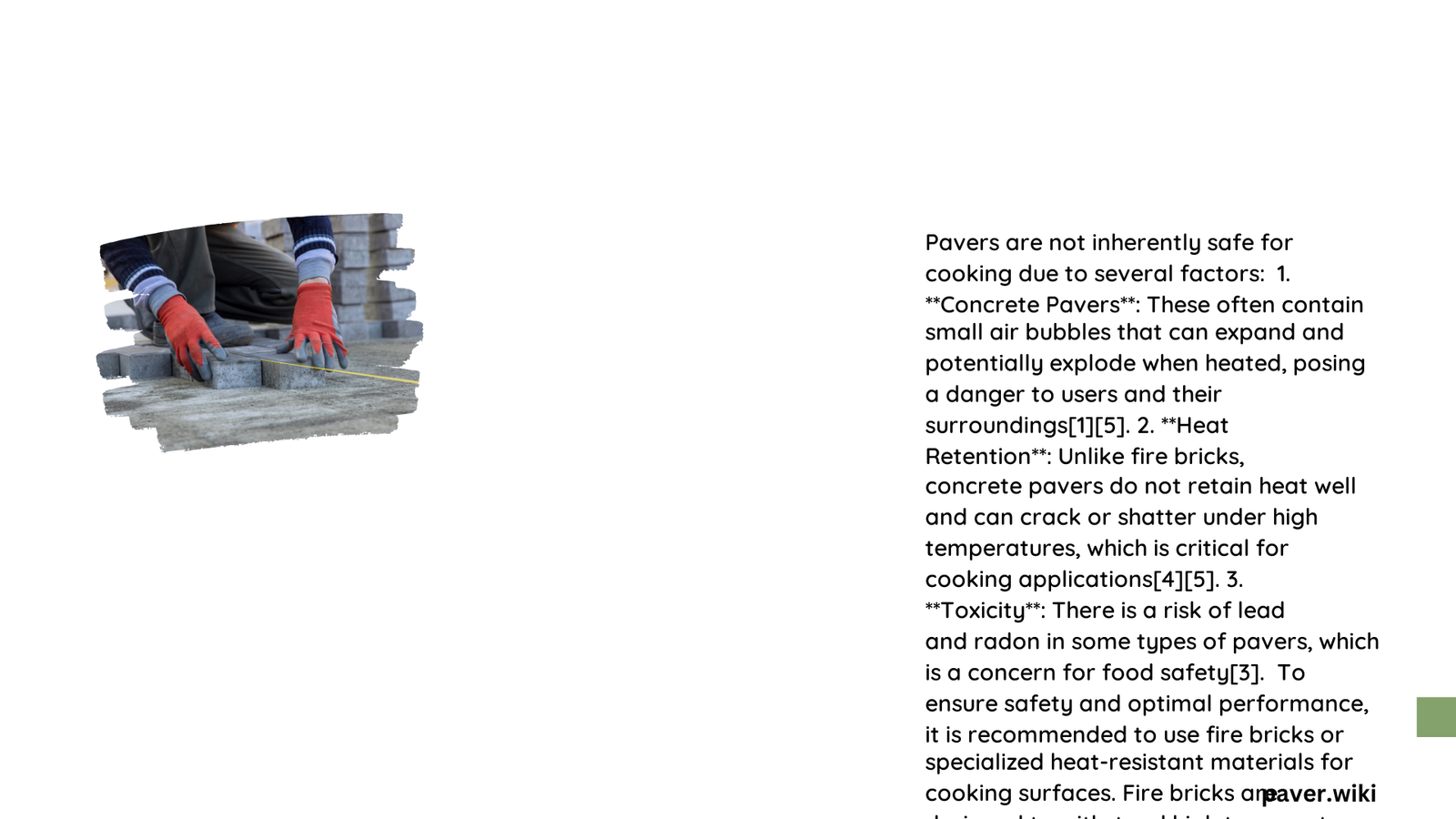Cooking on pavers can be safe when using the right materials and techniques. Not all pavers are created equal, with some materials like kiln-fired bricks offering exceptional heat resistance up to 2000°F, while others like concrete pavers may crack under intense heat. Understanding the specific properties of different paver materials is crucial for creating a safe and functional outdoor cooking space that prevents potential damage and ensures optimal performance.
What Materials Are Safe for Cooking Surfaces?
Are Kiln-Fired Brick Pavers the Best Option?
Kiln-fired brick pavers stand out as the most reliable option for high-heat cooking surfaces. These specialized bricks offer remarkable advantages:
- Extreme Heat Resistance: Can withstand temperatures up to 2000°F
- Non-Porous Structure: Prevents moisture absorption
- Structural Integrity: Minimal risk of cracking or exploding
| Paver Type | Heat Resistance | Recommended Use |
|---|---|---|
| Kiln-Fired Brick | Up to 2000°F | Ideal for fire pits, outdoor ovens |
| Porcelain | Moderate | Outdoor kitchen surfaces |
| Concrete | Low | Not recommended for direct heat |
How Do Different Paver Materials Compare?
Porcelain Pavers
Porcelain pavers provide a robust alternative for outdoor cooking areas. Their key characteristics include:
– Low water absorption rate
– Excellent temperature stability
– Durable surface resistant to wear
Concrete Pavers
Concrete pavers present significant limitations for cooking surfaces:
– High risk of thermal shock
– Potential for cracking under intense heat
– Not recommended for direct cooking exposure
What Safety Precautions Should You Take?

Can You Prevent Potential Hazards?
Implementing proper safety measures is crucial when using pavers for cooking:
- Proper Installation
- Create elevated platforms
- Use fire-resistant mortar
-
Ensure stable base construction
-
Heat Protection
- Install heat shields
- Maintain safe distance from direct flame
- Use protective underlayments
What About Food Safety Concerns?
While no specific studies definitively address food safety with pavers, experts recommend:
– Regular cleaning of cooking surfaces
– Avoiding porous materials that can harbor bacteria
– Selecting non-reactive, heat-resistant materials
Cost and Practical Considerations
How Expensive Are Safe Cooking Pavers?
Cost varies significantly between materials:
– Kiln-Fired Bricks: Most expensive, highest quality
– Porcelain Pavers: Mid-range pricing
– Concrete Pavers: Most affordable option
Expert Recommendations
Professional landscapers and outdoor kitchen designers consistently recommend:
– Prioritize kiln-fired bricks for high-heat areas
– Invest in quality materials
– Consider long-term durability over initial cost
Final Thoughts on Paver Cooking Safety
While pavers can be safe for cooking, careful material selection and proper installation are paramount. Kiln-fired bricks remain the gold standard for high-temperature cooking surfaces, offering unparalleled heat resistance and durability.
